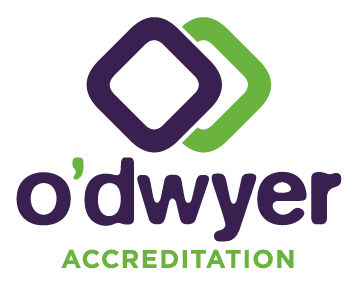
Do you sometimes struggle with decoding the non-conformances in NATA assessment reports? Some labs come to us after they have replied to the assessment report, bewildered by the response they’ve got back from NATA. They thought they had already covered what NATA was asking them to fix and can’t see what to do differently. Not only that, they have to provide a response in a short timeframe. It is largely an issue of language, or “official-ese”, which can sound over-complicated and even misleading. “Officialese” is the antithesis of plain english and often involves passive language, long words and generalisations.
Difficult Language
Misunderstanding often starts with the way the assessment non-conformances have been written in the first place. Some NATA staff use quite bureaucratic language. I guess they think this is the “correct” approach. But what it does is make their communications far more difficult to understand.
By the time you get to a couple of rounds of correspondence, the “offialese” can make it very difficult to work out what you need to do and how it is is related to the original non-conformance.
Take this example:
Records to indicate which staff have been authorised to report, review and authorise test results were not available.
This could translate to:
You need to create records to show which staff are authorised to:
- Report results
- Review test results
- Authorise test reports
Here’s another:
No documentary evidence was provided to satisfactorily address the condition raised (e.g. record of withdrawn date and record of equipment check even if withdrawn).
We translated this to:
Please send records showing the last check done on each piece of equipment listed in the original non-conformance. This applies whether the equipment is currently in use or not. For equipment that has been withdrawn from use please also include the withdrawn date.
When They Get It Right
NATA staff do get it right as well. Here are some really good examples of clear assessment report communication:
The equipment register had the following problems:
- The vernier scale isn’t included
- It doesn’t include records of the last check on the {equipment}
Please fix these problems and submit a copy.
Or
There were no training records for staff members g and f. You need to produce training records for these staff and send copies for review.
Restating Accreditation Requirements
Others have a habit of restating the words from the standard and then adding the specific things that they found wrong. I’m not saying this is wrong, but it can lead to confusion. Here’s a classic example:
Evidence of verification that equipment conforms with specified requirements must be retained. There was no evidence to indicate that (one specific piece of equipment) meets the specified requirements.
The lab manager was totally distracted by the first paragraph and spent a bit too much time reviewing how they store this information in general. An old hand recognises the first paragraph for what it is: simply a restatement of the clause from ISO 17025 6.4.13 b). Skip to the second line to find out what they actually discovered during the assessment.
Once you have sorted out the issue in the second line (the specific), you may go back and review how that error occurred in the first place and that may warrant a closer review of the system for collection and storing calibration records.
Here’s another example of this common problem:
Documents must be periodically reviewed to ensure they remain fit for purpose. The following issues were noted and must be addressed:
- Quality Manual references and incomplete list of accredited tests;
- Quality Manual action 3 states that equipment records are kept for the working life plus 3 years, however, Section 8 states that these records are kept for the working life plus 4 years;
On reading the first sentence you may think they are saying that all or most of your documents have not been reviewed, not been reviewed periodically, or are not fit for purpose. Or is it all three?
Thankfully the specific issues have been listed for you. Fix those, then have a quick look to see if the problem is more widespread. Don’t revamp your whole document review system unless YOU determine that it needs that.
When “All” means none?
We have seen a surprising number of problem non-conformances that involved using the word “all” which made the scope of the non-conformance impossible to work out. For example:
“Competence assessment records were not available for review for all personnel.”
Does it mean that there weren’t competency records for ANY personnel? Do we have to send them all in again? Or were there just particular ones missing? Without any specifics it’s difficult to know how to respond.
In this case the lab manager interpreted it as none of the records supplied to demonstrate competency were adequate and started on a major revamp of the competency assessment system.
You have two options here: ask for a bit more information or do a small audit of the records yourself to see if you can find the problem.
Addressing NATA non-conformances
Once you have waded through the difficult language, here’s how to go about addressing the non-conformance:
- Identify the specific thing/s that NATA found wrong. Go and have a look at it and confirm the details (NATA can get the wrong end of the stick at times).
- Fix that particular problem.
- Investigate to see how it happened (root cause) and how widespread it is.
- Decide whether it needs more action.
- Plan corrective action and continue with the PDCA cycle.
More information on addressing NATA-non-conformances.
We literally translate assessment reports for many laboratories. Drop us a line if you would like to know more.


